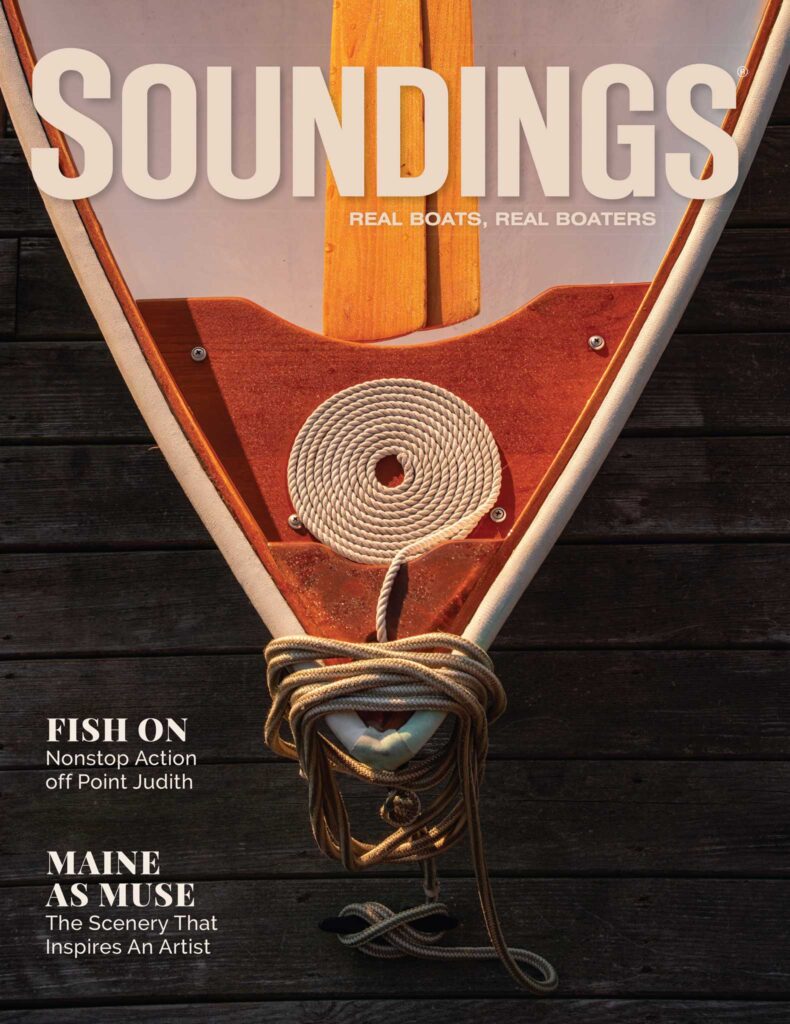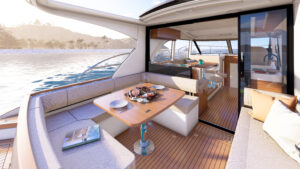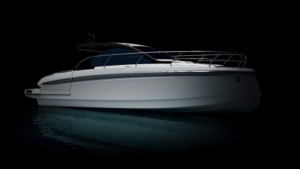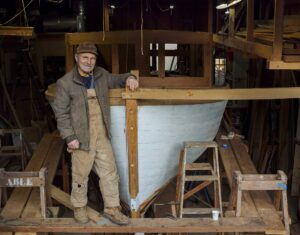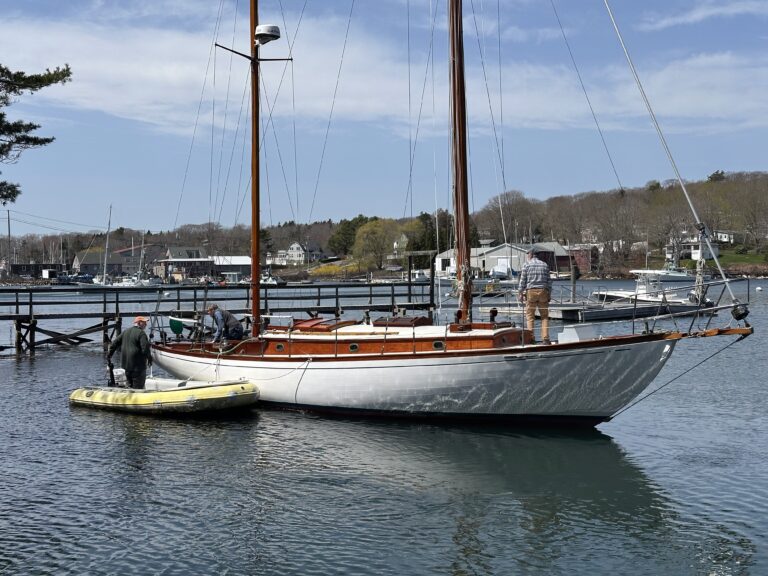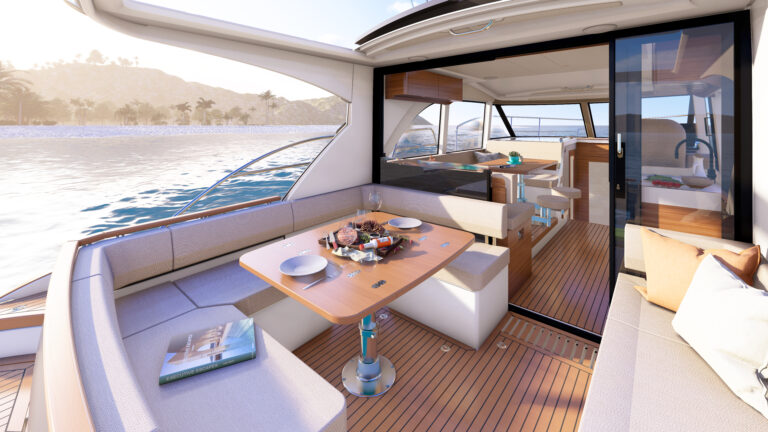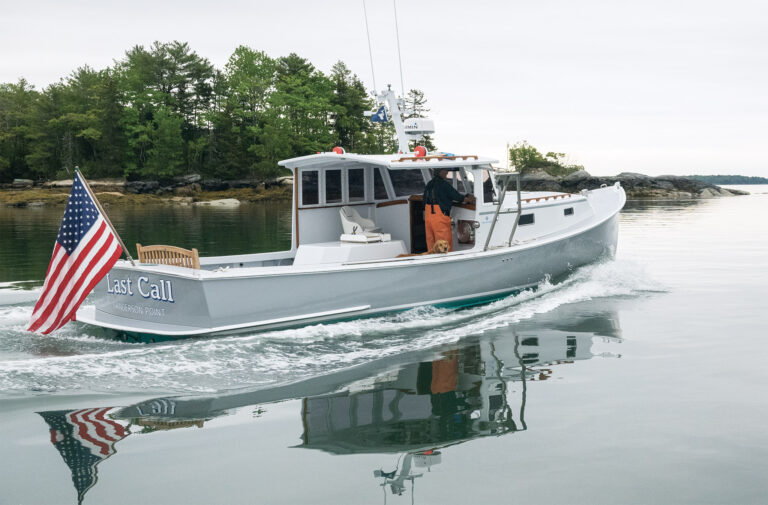“Some people take months, even years to find the perfect boat,” Tom Donlan says. He knows from experience. Tom and his wife, Carol, found Spirit, a Wilbur 32, after spending about three decades on the water, mostly on sailboats.
“She’s hardly perfect, but the boat is darned beautiful. At virtually every marina we visit, people on the dock stop and remark how attractive the design is.”
Although they bought Spirit in 2005, it was built in Maine in 1980 for an owner who likely used it on Narragansett Bay. A subsequent owner moved it to the Chesapeake Bay, where the couple eventually found it in a boatyard in Denton, Maryland.
Typical of lobster-boat construction in the 1970s, Spirit is powered by a single diesel—in this case, a 300-hp, 6-cylinder Yanmar, which was not the original engine. Tom says they’ve run the boat for close to 1,000 hours over the last 15 years, and it has performed and held up extremely well.
With her high bow and flared forward sections, it is easy to discern that the Wilbur 32 was meant to run dry and stable in open water. The gently raked stem curves smoothly to a keel section placed far forward, which runs full length to a point beneath the cockpit. There, it protects the running gear. The overall length is 34 feet when the anchor and swim platforms are included. Side decks connecting the foredeck to the cockpit are somewhat narrow but equipped with solid handholds on the deckhouse and a stainless steel bow rail.
The cockpit is wide and deep. There’s plenty of room for a portable table and folding chairs to supplement the bench seat across the transom. A stainless ladder with teak treads is set to port and provides access to the flybridge, where two fixed benches provide seating for four.
“When I stepped aboard and into the pilothouse, I knew this boat was the one,” Carol says. “I could see myself bringing coffee up to the bridge and sharing it with Tom.”
The Donlans also drive from the pilothouse, which gets plenty of natural light and ventilation from fixed and opening glass windows. To port is a dinette. The starboard helm has a raised seat for the driver, and there’s plenty of room between the seat and the vertical stainless steel destroyer wheel. Three steps down from the helm is a compact galley to port. The private head compartment is to starboard. A large V-berth for overnighting is forward.
Throughout the cabin, on both levels, Herreshoff-style wood trim and white panels are classic details.

